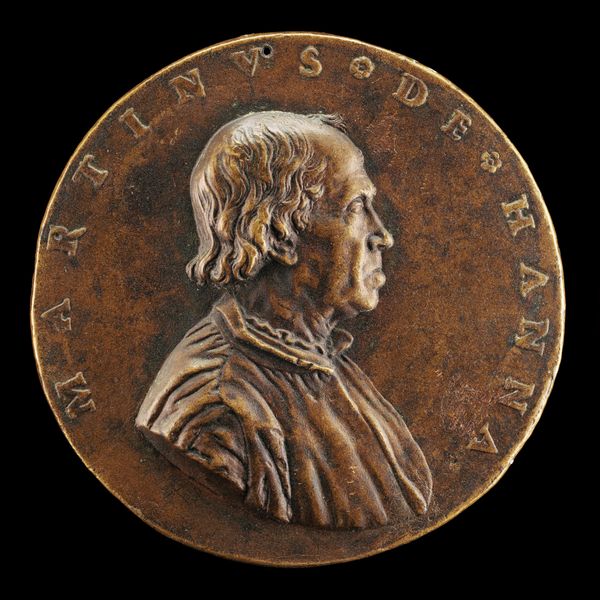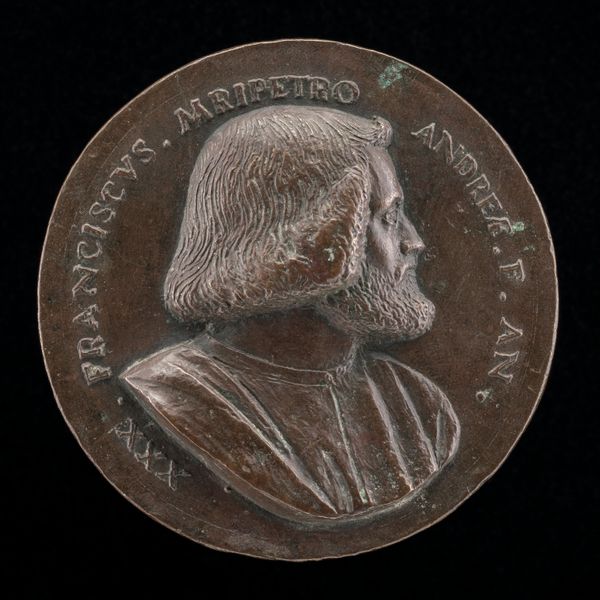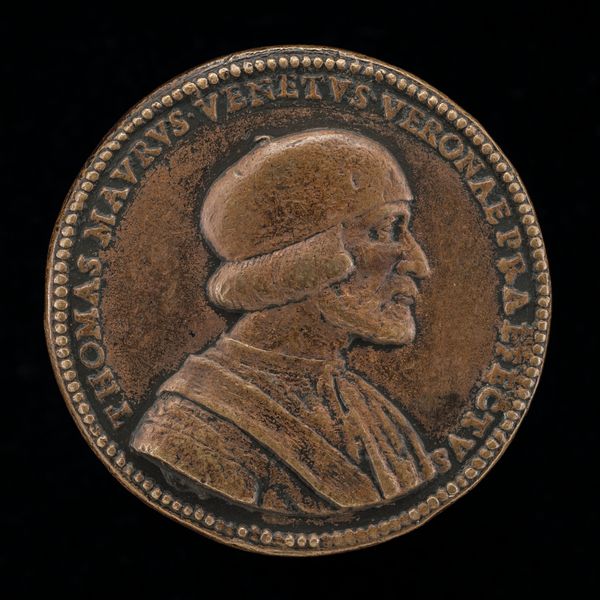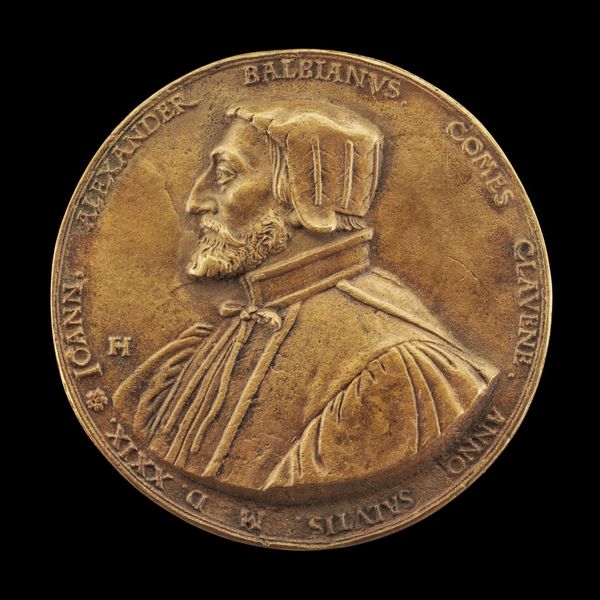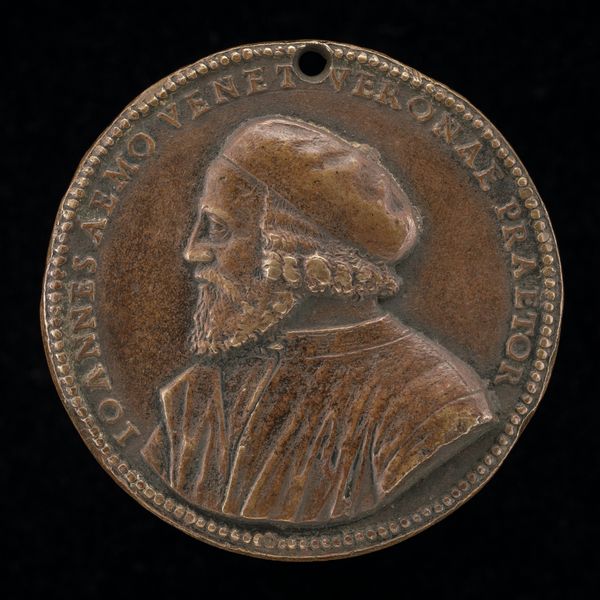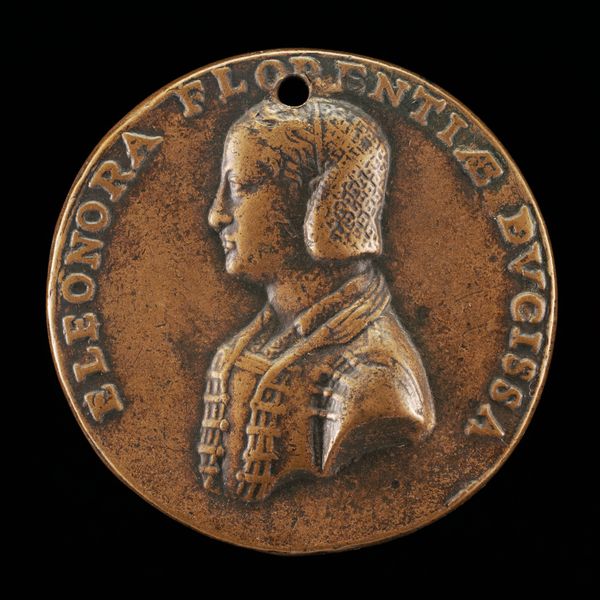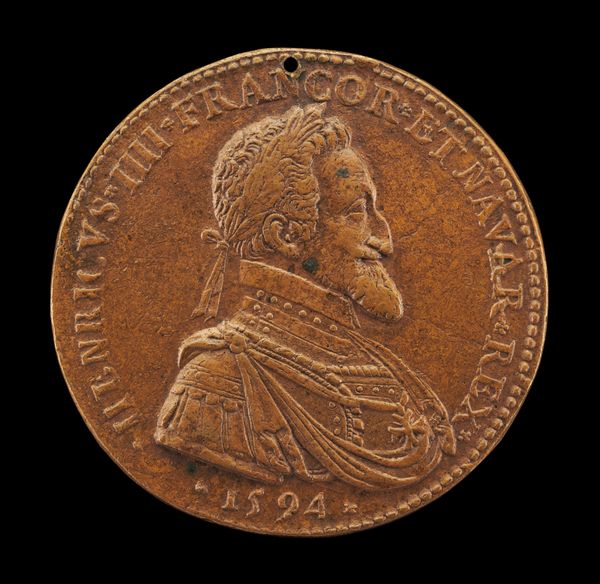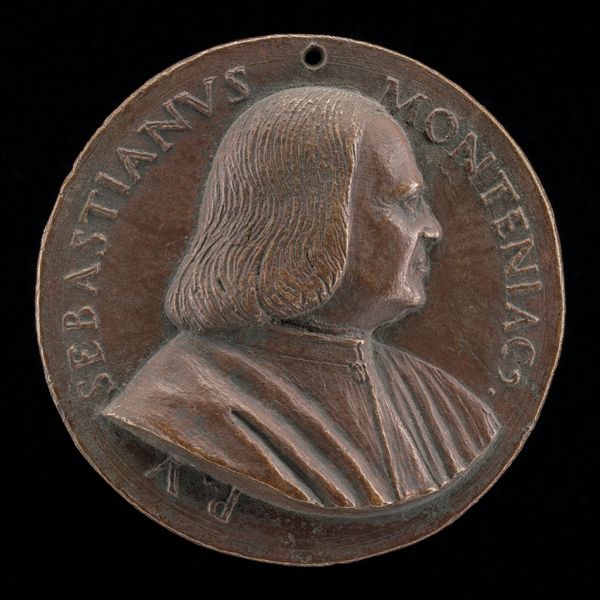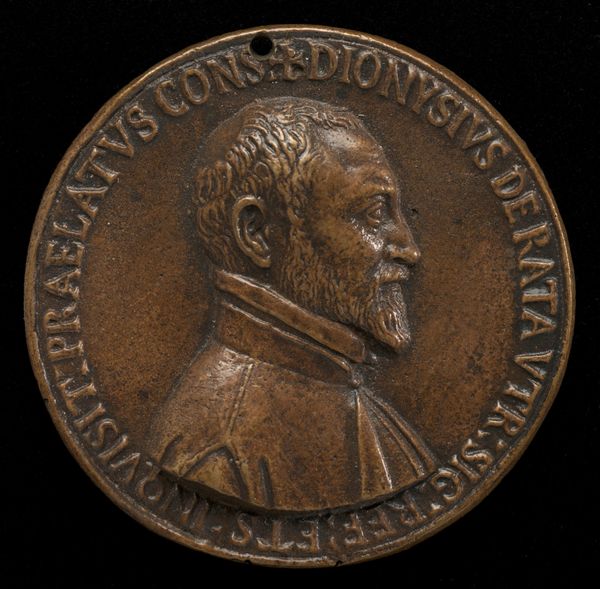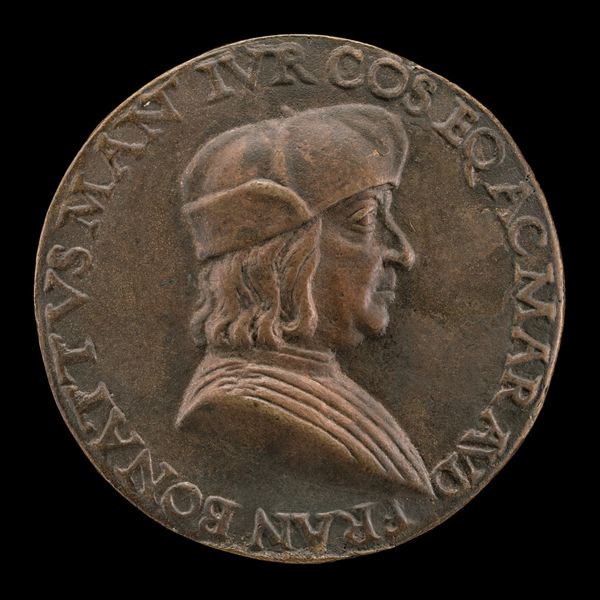![Andrea Gritti, Procurator of St. Mark's, later Doge of Venice [obverse] by Giovanni Falier](/_next/image?url=https%3A%2F%2Fd2w8kbdekdi1gv.cloudfront.net%2FeyJidWNrZXQiOiAiYXJ0ZXJhLWltYWdlcy1idWNrZXQiLCAia2V5IjogImFydHdvcmtzLzEwYzVkZGNiLWNiY2EtNDhkMS1iZWFjLWRlZTNhNWU4NTYxMS8xMGM1ZGRjYi1jYmNhLTQ4ZDEtYmVhYy1kZWUzYTVlODU2MTFfZnVsbC5qcGciLCAiZWRpdHMiOiB7InJlc2l6ZSI6IHsid2lkdGgiOiAxOTIwLCAiaGVpZ2h0IjogMTkyMCwgImZpdCI6ICJpbnNpZGUifX19&w=3840&q=75)
Andrea Gritti, Procurator of St. Mark's, later Doge of Venice [obverse] 1512 - 1516
0:00
0:00
relief, bronze, sculpture
#
portrait
#
medal
#
sculpture
#
relief
#
bronze
#
11_renaissance
#
sculpture
#
italian-renaissance
Dimensions: overall (diameter): 6.57 cm (2 9/16 in.) gross weight: 105.5 gr (0.233 lb.) axis: 12:00
Copyright: National Gallery of Art: CC0 1.0
Curator: This bronze relief portrait captures Andrea Gritti, Procurator of St. Mark's, who later became Doge of Venice. It was crafted by Giovanni Falier sometime between 1512 and 1516. What are your initial impressions? Editor: It has a very stoic feel to it. The lines are so sharp and defined. Curator: Yes, the materiality of the bronze gives it a certain gravitas, doesn't it? I am also fascinated by how the production of such a medal reflects the power dynamics of the era. Bronze casting was labor-intensive, a true artisanal practice. Editor: Precisely. Who gets memorialized in this way? Falier chose to represent Gritti not just as an individual, but as an embodiment of Venetian authority. Notice his garments; it speaks volumes about his station and how his status impacted social hierarchies in Venice. Curator: And think of the bronze itself. Where did it come from? Who mined it, who cast it? These medals often served as propaganda, circulated among elites to reinforce status and legitimacy through very specific material conditions of exchange. Editor: Right, there's a definite assertion of power inherent in that circulation, carefully crafted through a male gaze. We can explore the patriarchal structure of the era, where only certain individuals were granted such visibility and immortalization, too. Curator: Absolutely, and the medal also acts as a fascinating microcosm of Renaissance values. On one hand, a burgeoning sense of individual importance is obvious, and on the other, it acknowledges the reliance on skilled craftspeople and access to specific raw resources to manufacture images of power. Editor: Ultimately, viewing this medal reminds us of who is often left out of such narratives. Whose labor went into its making? Whose stories were considered less valuable, even invisible? Examining Gritti’s medal becomes a critical entry point for broader discussions. Curator: That’s an insightful way to consider its value beyond just an aesthetic object. It provokes us to think deeply about how we create, sustain, and consume imagery, while questioning the narratives embedded within them. Editor: Indeed, looking closely at artworks can help uncover many untold perspectives about social positionality during the Renaissance.
Comments
No comments
Be the first to comment and join the conversation on the ultimate creative platform.
